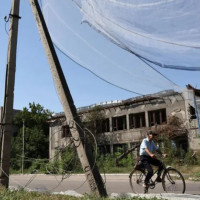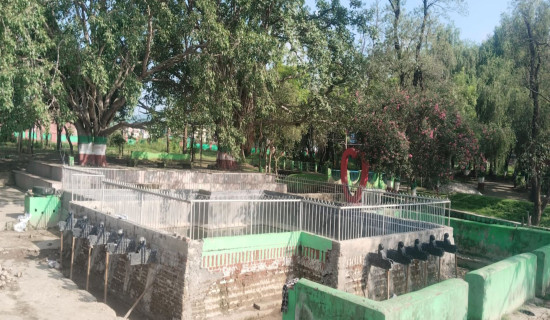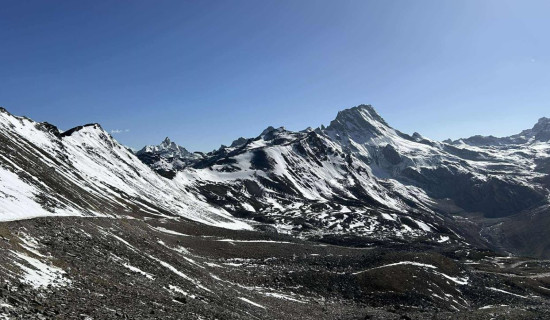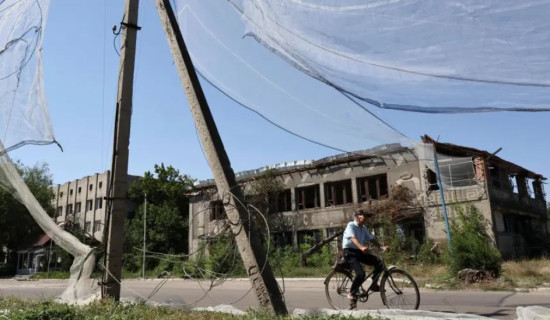- Thursday, 17 July 2025
Fallouts Of Indo-Pak Military Skirmishes
The political tension, sparked by a terrorist attack in Pahalgam in Kashmir on 22 April, brought the two nuclear power countries of South Asia to the brink of a full-scale war. This situation had emerged when the Indian Air Force launched a retaliatory strike codenamed "Operation Sindoor" on May 7, targeting what it claimed were terrorist camps deep into Pakistan-held Kashmir. The operation sent shock waves across the globe. Luckily, the timely engagement of major global powers, particularly the United States, helped de-escalate the conflict and secure a ceasefire before the situation would spiral out of control.
Indian Foreign Secretary Shri Vikram Misri described the Indian response as non-escalatory, proportionate and responsible. India has also said that these attacks were a compulsive step to deter and preempt further terrorist attacks. According to reports, India conducted nine separate attacks on the chosen targets within 25 minutes. Needless to say, the Pakistani military too retaliated with drone and missile strikes on Indian cities. Its deployment of Chinese-built J-10 C fighter jets equipped with PL-15 missiles reportedly led to the downing of some Indian Rafael aircraft. This significantly enhanced the perceived capacity of the Pakistani Air Force, whose combat effectiveness had previously been viewed with skepticism, and sparked global debate among military analysts.
Risk of escalation
With the truce in place, the risk of immediate risk of escalation has been averted but given the fragile foundation of the truce and the continued existence of the root cause of the conflict, it remains uncertain whether the present initiative will pave the way to lasting peace. Beyond casualties and loss of infrastructure on both sides, the armed clash between the two countries has unleashed a chain reaction in the sphere of diplomacy and regional stability. Both countries have expelled each other's diplomats, frozen economic cooperation and have suspended cross-border commerce and trade. Pakistan has closed its airspace to Indian airlines and India has suspended the Indus Waters Treaty, raising a specter of acute water shortage in Pakistan.
The armed conflict has agitated public sentiment, sparking mass protests in several Indian and Pakistani cities. Although the ceasefire is holding, mistrust hangs heavy in the air. The international observers are said to be closely monitoring the line of control to prevent further escalation, as the situation along the border remains tense and unpredictable. India and Pakistan share a troubled history dating back to 1947, when the British divided the British Indian territory into India and Pakistan based on religious demographics. Jammu and Kashmir was given the choice to join either Pakistan or India. It opted to remain independent for some time. But when tribal militias attacked from the Pakistani side, Maharaja Hari Singh signed an instrument of accession of Jammu and Kashmir with India in return for military assistance.
This decision sparked a dispute. Part of the population of the area wanted to remain in Pakistan, while the other half wanted accession to India. This became the root of long long-standing conflict. Both countries claim the entire Kashmir region but only partially control it. Over the decades, four major conflicts have taken place, including the present one, between the two countries for the control of the region, keeping their relationship perpetually tense and the population of the region in a state of uncertainty and unrest. Since the 1990s, insurgency has been going on in the region, which is being sustained by a series of terrorist attacks by pro-Pakistani militants claiming thousands of lives.
In 2019, a terrorist attack on an Indian convoy took place in Pulwama, Kashmir, killing 40 CRPF personnel. Earlier, in 2016, there was a similar attack in Uri, also in Kashmir, resulting in the death of 19 soldiers. The Mumbai terrorist attack of 2008 was most harrowing, with the death of 166 people, including 18 security personnel. The latest Pahalgam attack claimed the lives of 26 people and pushed the two countries to the verge of a full-scale war. The war triggered by the Pahalgam terrorist attack was brief but it was potent enough to unleash a profound geopolitical repercussion, which has reshaped geopolitical dynamics and influenced global strategic calculations.
Until now, India-Pakistan conflicts were confined to border skirmishes involving artillery fire against each other's positions across the Line of Control. However, this conflict marked a departure from the conventional modality of conflict, showcasing a significant enhancement of military capability of India to strike deep into strategic targets. India's precision strike capability and Pakistan's alleged success in downing French-built Rafael fighter jets using PL-15 missiles mounted on Chinese-built J-10 C fighter aircraft have drawn global attention to the efficacy of Chinese modern weapons.
The weapons experts worldwide are now considering the efficacy of modern Chinese weapons systems, which were previously viewed with skepticism due to a lack of their battlefield testing and the question of reliability. This brief but intense conflict between India and Pakistan has belied this assumption, suggesting that China is rapidly advancing in cutting-edge military technology. This indicates that China has improved its competitive position to influence the international weapons market and bring about a shift in geo-strategic dynamics of the region and the world.
Third-party mediation
Another notable feature of this conflict is the entry of third-party mediation. Traditionally, India has resisted international mediation on the Kashmir issue, insisting that it would resolve this issue through the bilateral diplomatic mechanism. However, in this instance, the United States appears to have played a significant role in engaging both sides in intense diplomatic talks to bring about a ceasefire.
Fortunately, this conflict was contained before it escalated into a prolonged and devastating war of attrition like the ongoing Russian and Ukraine war. The credit for this primarily goes to the leadership of the two countries for exercising restraint, though the mediating role of global powers was also instrumental in averting the disaster. The immediate storm may have passed but the clouds of war are still rumbling on the horizon. Let this brief but brutal episode of conflict serve as a sobering reminder that there is no better path to peace than through dialogue and negotiation.
(Dr. Bharadwaj is a former ambassador and former chairperson of Gorkhpatra Corporation. bharadwajnarad@gmail.com.)

















